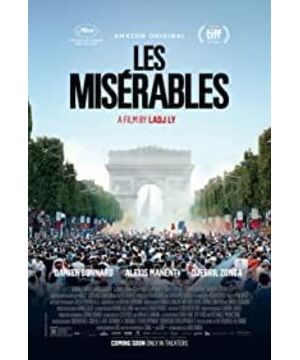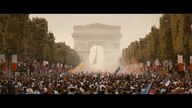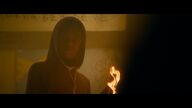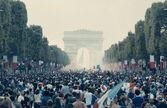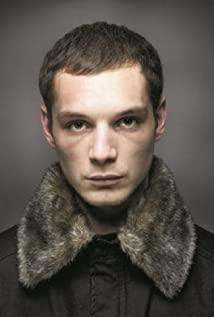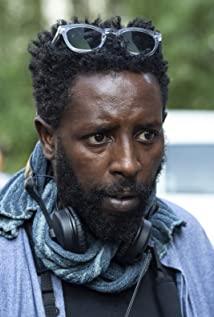The opening of the 92nd Oscar Awards Ceremony is just around the corner. For those of us who are caught in the epidemic, it may be the only event worth looking forward to in the film industry in the near future. Before the awards are officially presented, we might as well watch this year's shortlist: the 92nd Oscar nomination list, there are surprises and regrets . The battle has not yet started, and the PR campaign for the best film has become intensified.
In contrast, "Best International Film" does not seem to have much suspense. But although "Parasite" has the highest probability of winning, the other four shortlisted works are equally not to be underestimated, including "Pain and Glory", "Honeyland", "Christian Eucharist", and "Les Miserables" that we are going to talk about today. .
And this has to start with Cannes last year. Compared with previous years, the 72nd Cannes Film Festival can be described as a rare "New Year", Quentin, Almodovar, Malik, Feng Junhao, Dane Brothers, Ken Roach and other famous directors have appeared in the Cinema Palace. .
Among the many attentions, the new director La Geely’s feature film debut "Les Miserables" unexpectedly became a dark horse and won a jury award from many masters. In the eyes of movie fans, in addition to making people feel the spirit of Spike Lee when filming "As It Should Be", what is more precious is the director’s cognition of the social concept of violence. And its unique understanding of the camera.
The story of the film "Les Miserables" takes place in the Seine-Saint-Denis department in the northern suburbs of Paris, France, which is usually referred to as "Area 93" or "Department 93". Because of its attributes of a worker community, coupled with the influx of illegal immigrants, the 93 provinces have gradually become a "police gray area", with a high incidence of illegal and criminal activities such as drug trafficking, prostitution, robbery, and theft.
The 93 provinces in today's France can be described as "the food is tasteless, but it is a pity to discard it". On the one hand, the 93 provinces are a symbol of the expansion policy of Greater Paris and the French immigration policy. Furthermore, from the perspective of human rights, the French government will not abandon them in any way. But on the other hand, from the data point of view, the 93 provinces have been rated as one of the "poorest regions in France" for many consecutive years, and their own development prospects are poor, coupled with the high difficulty of local security management, which has made management expenditures increasing. For the French government, which has been threatened by terrorist attacks by extremist organizations, this is indeed even worse.
Under this "three-no-nothing" situation, the 93 provinces have evolved a unique neighborhood temperament that is not French. The opening footage of "Les Miserables" undoubtedly interprets this point: After France won the World Cup, people of different skin colors got together and reveled in front of the Arc de Triomphe; under the surface, La Gili's regular hand-held camera created this An illusory sense of happiness.
However, the movement and the static between the shots, and the large and small combinations between the scenes, while showing a gradual and orderly rhythm, also makes the different spaces with large visual differences in the paragraphs are forced by this rhythm. "Harmonization" is in itself anti-harmonious. It echoes the opening climax of the text and forms an extremely abnormal perception, which makes the audience more uneasy and anxious. This sense of uneasiness in the image stretched out and quietly evolved into the tone of the neighborhood's temperament, that is, the "undercurrent surging sense of crisis."
As the three policemen assembled, the camera focused on the police car they were riding in. The police car becomes the main stage of the narrative here. In the police car, three police officers with different identities and different backgrounds show obvious differences between individuals in the chatting and law enforcement process. The three seem to be peaceful in the car, but in fact they get off the car. I missed the stuffing.
In the face of immigrant female students, Chris was tough and violent, while Vada stood by while Stephen continued to discourage Chris from violent law enforcement and advocated peaceful treatment. With the preparation of the three-person conflict, the “undercurrent surging” of the 93 provincial neighborhoods has also been given to the interior space and this set of triangle relationships; the police car is thus integrated into the neighborhood, and its image of outsiders is also weakened. .
Outside the police car, under a large number of conventional shots, the street environment is displayed through the path of the police car. Along with Chris's "poisonous tongue", various forces in the block took turns to appear on the scene, either clashed or "cooperated" with the three police officers, and in the process, the outline of the block's ecological relationship gradually became clear.
The sharp contradictions between groups lurking under the surface of peace, whether it is the police, the "mayor" or the black children, they are just supporting roles on the block stage. The lack of the “protagonist” seems to have caused the image of the block to be shed part of the illusion of the movie, and fall more into the reality of life, conveying that “the undercurrent of violence lurks around our lives”, and the audience’s feelings The sense of anxiety continues to be magnified.
It is worth mentioning that the director also added a lot of cultural footnotes when showing the neighborhood: black children with drones were asked by their fathers to “go outside, even if they didn’t do anything” on weekends; Chris was right. Hugo's "Les Miserables" ridicule; Muslim interference in neighborhood affairs, etc. These seemingly jokes and humorous fragments hide heavy social problems. The working class’s neglect of the education of future generations, the inability of police management, the expansion of religious groups, the director integrates the most powerful social expressions into the most common generalizations. It's like an anatomical mirror of society, slow and powerful.
The disappearance of the lion cub symbolized the beginning of the "Game of Thrones" in the neighborhood. The child who stole the lion cub from the circus became the center of the whirlpool of power for a time. This accident mobilized all the conflicts in the entire film. Police, gangs, and religious groups competed for the cubs, which was essentially a struggle for the right to speak in the management of the neighborhood. In the improper power struggle, the violence has not been alleviated, but will only intensify.
As victims of power struggles, on the one hand, children not only did not receive the normal education they deserve, but suffered violent intimidation that caused great psychological trauma; on the other hand, children who had tasted the short-lived taste of power obviously also had power. Dependence, these undoubtedly plant new "seeds of violence" in children's hearts.
The barbaric rules of tooth for tooth and eye for eye are still applicable in modern society. The violence of human society seems to be caught in a tragic cycle. The old violence cannot be resolved, and the new violence has already emerged at the historic moment.
Now that the "undercurrent surging violence" has intensified, then there is only a tendency to erupt next. After basically explaining the relationship between the main characters, the director arranged a number of intense chasing scenes to instantly mobilize the audience's silent senses. The camera still maintains a sense of stability during the continuous follow-up process, which makes the picture produce a kind of news documentary effect.
The real outbreak of violence came from the "chasing battle" between the children and the police. The shaking of the handheld camera reached its peak in this scene, and the noisy fight pushed the film to its second climax. When Vada injured the child, contrary to the narrative climax, the audiovisual chose "silence". The camera moves back and forth between the faces of the three police officers, and through external events, the differences between the three are once again intensified.
Subsequently, while adding the aerial photography of the Grand Vision UAV and embedding new narrative clues, it tried to create a de-emotional sense of objectivity. This is essentially a continuation of the strategy of depicting the neighborhood in the first half. The more violent the more calm, it implies the never ending of violence: "After the climax, there is obviously more violence just about to move."
Under the climax of the violent conflict, the director chose to temporarily calm down, which made the camera's external role attributes be greatly dispelled by the sense of stability. It seems that the violence in front of the camera is not the performance in front of the camera. After a long period of foreshadowing, they have become living individuals in this neighborhood; and the violence hidden in daily life is "naturally" dramatized and accepted by the audience.
In the second half of the film, the director used this gradual violent performance to the end. After what seemed to be the end of the day and a peaceful atmosphere, the conflict was pushed to the extreme again, and everything fell into disarray.
It is worth mentioning that La Gili's camera often changes different identities in movies. In the early stage of paving the group image of the block, the camera was like a window through which the audience could objectively watch everything in the block, and the image thus produced an efficient generalization effect.
With the completion of the main environment, the camera's field of view becomes smaller, and the focus is changed from the external relationship to the internal relationship. The camera at this time becomes a microscope, carefully analyzing the internal contradictions among several groups, and highly visualizing the footnotes in the text, which also serves the narrative to a certain extent.
After the stimulus event occurred, the camera movement mode changed drastically, the number of moving shots increased, and the frequency of use of small scenes increased. The camera is extremely aggressive under the control of the director, and there are traces of high-speed camera movement everywhere in the streets, indoors, and on people. The enhancement of the third-person perspective makes the camera gradually evolve into a "present" role participating in the violent conflict. It is like a member of a violent gang with its own position and viewpoint.
But director Raj Lee is obviously dissatisfied with this. In addition to the establishment of the "present" role, he has established an "absence" role: "drone." UAVs rely on their broad field of vision and The situation of direct involvement in the conflict simultaneously summarizes all the conflicts in the neighborhood. If the camera shows the objective, then the drone shows the objective, the so-called God’s perspective. This opposition of "presence" and "absence" creates a new sense of confrontation in the same scene, and extends the violent conflict beyond the image space and penetrates into the audience's thinking.
The last "corridor battle" paragraph is a large collection of camera identities: at the beginning, the camera was kept in sync with the previous "calm window" under regular patrols, but in such situations as fully loaded carts, water guns, sneaky crowds, etc. After the repeated occurrence of violent elements, the camera became a microscope again, returning to the triangle relationship of the police in the car, showing the three people's different performances in the face of anxiety.
When the police entered the building, the camera regained the “aggressiveness” of the violent conflict. With the first noise of hearing, the camera quickly got out of the police's perspective and shuttled back and forth between the two parties in the conflict and various violent tools. At this moment, it focuses on the individual not to narrate the characters, but to capture the short-lived emotions of the characters under violence. But most of the time, the camera does not focus on people, it only focuses on Molotov cocktails and flash bombs, bringing cold violence to the extreme.
Although "Les Miserables" is not directly related to the writer Victor Hugo's novel in text, at the end of the film, the director chose to fall on the value tendency of Hugo's "Les Miserables": "There is no evil. Humans are only the nourishment of evil.” Unfortunately, the cold words appear extremely weak in the merciless flames of the Molotov cocktail.
In fact, violence is an endless cycle. Once it starts, it is destined to come and go. Anyone can easily become an evil person at any moment. We seem to be unable to judge the residents of this depressed neighborhood by the binary opposition of good and evil. They are walking, wondering whether they will step into the abyss or the ideal land.
Compared with Hugo’s beautiful yearning for the truth, goodness and beauty in Les Misérables, perhaps the preface of Les Misérables is more realistic. He wrote:
As long as the social oppression caused by laws and customs still exists for one day, in the heyday of civilization, the world will be artificially turned into a hell, and the natural fortune of mankind will suffer inevitable disasters; as long as the three problems of this century- -Poverty makes men fall, hunger makes women fall, and darkness makes children weak-there is still no solution; as long as there may be social poisoning in certain areas, in other words, in a broader sense, as long as There are still ignorance and hardships in this world, so works of the same nature as this book will not be useless.
Author | Huang Moyu; Official Account | Seeing Death in Movies
Edit | Riding a Rooftop Boy; please indicate the source for reprinting
View more about Les Misérables reviews


